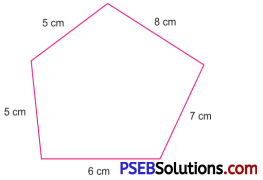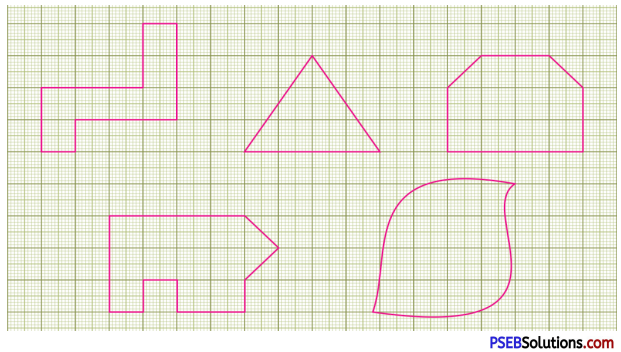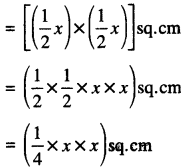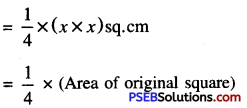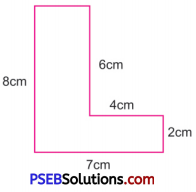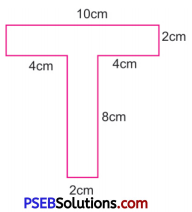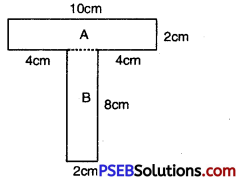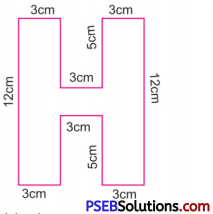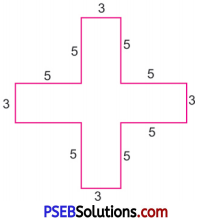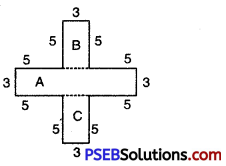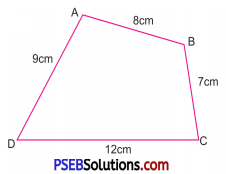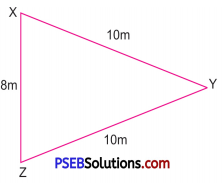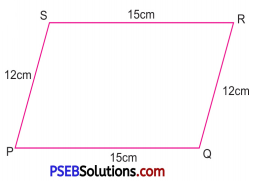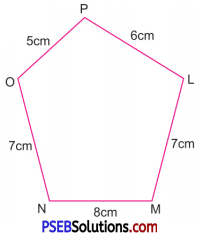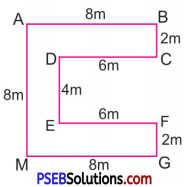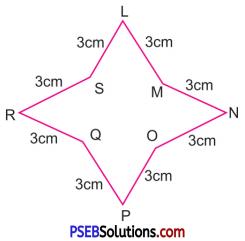Punjab State Board PSEB 6th Class Hindi Book Solutions Chapter 10 राष्ट्रीयता का तीर्थ-खटकड़ कलाँ Textbook Exercise Questions and Answers.
PSEB Solutions for Class 6 Hindi Chapter 10 राष्ट्रीयता का तीर्थ-खटकड़ कलाँ
Hindi Guide for Class 6 राष्ट्रीयता का तीर्थ-खटकड़ कलाँ Textbook Questions and Answers
भाषा-बोध (प्रश्न)
1. शब्दों के अर्थ ऊपर दिए जा चुके हैं।
प्रण =प्रतिज्ञा
प्रसिद्ध = मशहूर
स्मारक = याद में
धूलि = धूल
सम्मान = आदर
उम्र = आयु
प्रतिमा = मूर्ति
पट्टिका = पटिया, तख्ती
पैतृक = पिता का
सहयात्री = साथ यात्रा करने वाली
धरोहर = अमानत
बुलन्द = ऊँचा
कांस्य = ताँबे और टिन से बनी एक धातु
2. समानार्थक लिखिए
1. आजाद = ………………..
2. शहीद = ……………….
3. प्रसिद्ध = …………………
4. क्रान्तिकारी = ………………
5. स्वागत = ……………….
उत्तर:
समानार्थक शब्द
1. आज़ाद = स्वतन्त्र
2. शहीद = बलिदानी
3. प्रसिद्ध = मशहूर
4. क्रान्तिकारी = आन्दोलनकारी, इन्कलाबी
5. स्वागत = अभिनन्दन, शुभागमन
3.शुद्ध रूप लिखें
1. समिती = ………………….
2. परसिद्ध = …………………
3. पैतरिक = ………………….
4. सवतंत्रता = ………………..
5. जलियावाला = ………………..
6. समारक = ………………….
7. सनंवेदनशील = ………………….
उत्तर:
अशुद्ध रूप शुद्ध रूप
1. समिती = समिति
2. पैतरिक = पैतृक
3. परसिद्ध – प्रसिद्ध
4. सवतंत्रता = स्वतंत्रता
5. जलियावाला = जलियाँवाला
6. समारक = स्मारक
7. सनवेदनशील = संवेदनशील
4.’शील’, ‘शाली’, ‘कारी’, ‘ता’ शब्दांशों को जोड़कर दो-दो नए शब्द लिखिए।
उत्तर:
शील-दानशील, प्रगतिशील।
शाली-बलशाली, प्रभावशाली।
कारी-क्रान्तिकारी, चित्रकारी।
ता-समता, भावुकता।
5. वैसे तो खटकड़ कलां ज़िला नवाँशहर का छोटा-सा गाँव है पर यह किसी तीर्थस्थल से कम नहीं। क्या आप ने खटकड़ कलां का नाम सुना है ?
ऊपर लिखे वाक्यों में “वैसे तो” ‘पर’ रेखांकित शब्द दो वाक्यों को परस्पर जोड़ते हैं, अतः सम्बन्धवाचक सर्वनाम के उदाहरण हैं।
‘क्या’ शब्द प्रश्न का बोध कराता है, अत: यह प्रश्नवाचक सर्वनाम का उदाहरण हैं।
![]()
6. भूत और भविष्य काल लिखें
एक छोटा-सा गाँव है – वर्तमानकाल
…………………………… = भूतकाल
…………………………. = भविष्यकाल
उत्तर:
एक छोटा-सा गाँव है = वर्तमानकाल
यहाँ एक द्वीप था = भूतकाल।
मैं कल अमृतसर जाऊँगा = भविष्यकाल।
विचार-बोध (प्रश्न)
(क) निम्नलिखित प्रश्नों के उत्तर दीजिए
प्रश्न 1.
भगत सिंह के पैतृक गांव का क्या नाम है ?
उत्तर:
भगत सिंह के पैतृक गांव का नाम खटकड़ कलां है। वह नवांशहर बंगा सड़क पर स्थित है।
प्रश्न 2.
भगत सिंह का नारा क्या था ?
उत्तर:
भगत सिंह का नारा था-‘इन्कलाब ज़िन्दाबाद’।
प्रश्न 3.
भगत सिंह कैसा साहित्य पढ़ते थे ?
उत्तर:
भगत सिंह क्रान्तिकारियों का साहित्य पढ़ते थे।
प्रश्न 4.
भगत सिंह के माता-पिता का क्या नाम था ?
उत्तर:
भगत सिंह की माता का नाम श्रीमती विद्यावती और पिता का नाम सरदार किशन सिंह था।
प्रश्न 5.
भगत सिंह को किन साथियों के साथ फांसी की सज़ा मिली ?
उत्तर:
सरदार भगत सिंह को उनके साथियों सुखदेव और राजगुरु के साथ फांसी की सज़ा मिली।
प्रश्न 6.
लाला जी की मौत का बदला भगत सिंह ने कैसे लिया ?
उत्तर:
लाला लाजपतराय ने साइमन कमीशन के विरोध में लाहौर में जुलूस निकाला। पुलिस अफसर सांडर्स के आदेश पर लाठीचार्ज किया गया। लाठीचार्ज में लाला जी घायल हो गए। कुछ दिन बाद उनका निधन हो गया। क्रान्तिकारियों ने सांडर्स की हत्या करके लाला जी की मौत का बदला ले लिया।
प्रश्न 7.
अजीत सिंह का निधन कब हुआ ? उत्तर-अजीत सिंह का निधन 15 अगस्त, सन् 1947 को हुआ। 8. पंजाब माता का सम्मान किसे दिया गया ?
उत्तर:
‘पंजाब माता’ का सम्मान भगत सिंह की माता विद्यावती को दिया गया।
(ख)
प्रश्न 1.
जलियांवाला बाग की घटना अपने शब्दों में लिखिए।
उत्तर:
13 अप्रैल, सन् 1919 को अमृतसर के जलियावाला बाग में जनसभा थी। कांग्रेस के अनेक नेता इसमें सम्मिलित हुए थे। अंग्रेज़ सरकार ने अचानक जनसभा को गैर-कानूनी घोषित कर फायरिंग शुरू करवा दी। निकलने का एक ही मार्ग था। जनता में भगदड़ मच गई। हज़ारों निहत्थे लोग अंग्रेज़ पुलिस की गोलियों का शिकार हो गए।
प्रश्न 2.
भगत सिंह को अमृतसर की मिट्टी ने किस प्रकार भावुक बना दिया ? जलियांवाला बाग हत्याकाण्ड के आधार पर स्पष्ट करो।
उत्तर:
भगत सिंह को अमृतसर में हुए 13 अप्रैल, सन् 1919 को मुंशस हत्याकाण्ड ने इतना भावुक और दुःखी बना दिया था कि वे उस बाग से रक्त से भीगी मिट्टी लेकर लौटे थे।
प्रश्न 3.
आप कैसे कह सकते हैं कि यदि भगत सिंह क्रान्तिकारी न होते तो बहुत बड़े लेखक होते ?
उत्तर:
शहीद भगत सिंह को बचपन से ही पढ़ने-लिखने का तथा अभिनय करने की बहुत रुचि थी। क्रान्तिकारी साहित्य में वे खूब रुचि लेकर पढ़ते थे। इसी कारण वे क्रान्ति
और जोश से भरी रचनाएं भी रची थीं उन्होंने बलवंत के नाम से अनेक लेख भी लिखे थे। उन्हें उर्दू, हिन्दी और अंग्रेजी भाषा पर भी एक समान अधिकार प्राप्त था। इसी कारण कहा जा सकता है कि यदि वे क्रान्तिकारी न होते तो एक लेखक के रूप में ज़रूर प्रसिद्ध होते।
प्रश्न 4.
भगत सिंह जैसे शहीदों की शहादत से देश आज़ाद हुआ। अपने देश की रक्षा के लिए आप क्या कर सकते हैं ?
उत्तर:
भगत सिंह जैसे शहीदों की शहादत से देश आजाद हुआ। इस आजादी को सम्भाल कर रखने की ज़िम्मेदारी अब हमारी है। हमें अपने देश को विकास की ओर लेकर चलना है। हमें अपने देश की आज़ादी की रक्षा अपने प्राणों से भी बढ़कर करनी है।
![]()
प्रश्न 5.
भगत सिंह के कौन-कौन से गुण आप अपनाना चाहेंगे ?
उत्तर:
हम भगत सिंह के देश-प्रेम की भावना जैसे गुण अपनाना चाहेंगे ताकि देश रक्षा करते हुए यदि जान भी देनी पड़े तो हम पीछे न हटें।
आत्म-बोध (प्रश्न)
1. शहीद भगत सिंह का चित्र कक्षा में लगाएं।
2. पंजाब के स्वतन्त्रता सेनानियों की सूची तैयार करें।
3. जब कभी उधर जाओ, तो खटकड़ कलां में भगत सिंह का स्मारक अवश्य देखकर आओ।
4. किसी महान् पुरुष की जीवनी को पढ़ें और उनके गुणों को जीवन में उतारने का प्रयत्न करें।
उत्तर:
अपने अध्यापक/अध्यापिका की सहायता से स्वयं करें।
बहुवैकल्पिक प्रश्न
प्रश्न 1.
भगत सिंह ने कौन-सा नारा दिया ?
(क) इन्कलाब जिन्दाबाद
(ख) जय हो
(ग) भारत छोड़ो
(घ) जय जवान
उत्तर:
(क) इन्कलाब जिन्दाबाद
प्रश्न 2.
भगत सिंह के पैतृक गाँव (जहाँ उनका जन्म हुआ) का क्या नाम है ?
(क) खटकड़
(ख) कलां
(ग) खटकड़ कलां
(घ) अमृतसर
उत्तर:
(ग) खटकड़ कलां
प्रश्न 3.
भगत सिंह कैसा साहित्य पढ़ते थे ?
(क) क्रांतिकारियों का
(ख) अंग्रेजों का
(ग) हिंदुस्तानियों का
(घ) भारत माता का
उत्तर:
(क) क्रांतिकारियों का
प्रश्न 4.
जलियांवाला बाग हत्याकांड की घटना कब घटित हुई ?
(क) 13 अप्रैल, 1919
(ख) 13 अप्रैल, 1920
(ग) 13 अप्रैल, 1921
(घ) 13 अप्रैल, 1922
उत्तर:
(क) 13 अप्रैल, 1919
प्रश्न 5.
निम्नलिखित में से संबंधवाचक सर्वनाम का उदाहरण है
(क) पर
(ख) कहां
(ग) किसने
(घ) वे
उत्तर:
(क) पर
प्रश्न 6.
निम्नलिखित में से प्रश्नवाचक सर्वनाम का उदाहरण कौन-सा है ?
(क) कोई
(ख) कुछ
(ग) क्या
(घ) उन्होंने
उत्तर:
(ग) क्या
![]()
राष्ट्रीयता का तीर्थ खटकड़ कला Summary
राष्ट्रीयता का तीर्थ खटकड़ कला पाठ का सार
अमर शहीद भगत सिंह का जन्म लायलपुर (पाकिस्तान) में बंगा चक में हुआ था, खटकड़ कलाँ में नहीं। अब जन्म स्थल पाकिस्तान में छूट जाने के कारण उनके पैतृक गांव खटकड़ कलाँ (बंगा के निकट) को ही जन्म स्थान के बराबर आदर-सत्कार दिया जा रहा है। इसीलिए इसे तीर्थ स्थल के समान भी माना जाता है। खटकड़ कलाँ गांव नवांशहर-बंगा रोड पर स्थित है। वहां सड़क के किनारे शहीद भगत सिंह की कांसे की मूर्ति स्थापित है। सन् 1919 को वैशाखी के दिन यानी 13 अप्रैल को अमृतसर के जलियांवाला बाग में एक जनसभा का आयोजन हुआ था। उस जनसभा में एकत्रित हुए लोगों पर अंग्रेज़ पुलिस अधिकारी जनरल डायर के आदेश पर अन्धा-धुन्ध गोलियां चलाई गई थीं। उस समय भगत सिंह बहत छोटे थे पर वे अपनी बहन अमरजीत कौर को बताए बिना अमृतसर गए थे और उस बाग के रक्त से भीगी मिट्टी लेकर लौटे थे। भगत सिंह आजादी पाने की उधेड़-बुन में लीन रहते थे। वे घर छोड़ कर कानपुर पहुंच गए। वहां वह गणेश शंकर ‘विद्यार्थी’ के समाचार-पत्र में काम करने लगे। भगत सिंह ‘बलवन्त’ के नाम से लेख लिखते थे।
शहीद भगत सिंह की स्मृति में 23 मार्च को प्रति वर्ष खटकड़ कलाँ और फिरोज़पुर के निकट सतलुज के किनारे हुसैनीवाला में मेले लगते हैं। वे अपने साथियों राजगुरु और सुखदेव के साथ 23 मार्च, सन् 1931 को हंसते-हंसते फांसी के तख्ते पर झूल गए थे। सुखदेव पंजाब के लुधियाना नगर में ही जन्मे थे तो राजगुरु महाराष्ट्र, प्रदेश के वासी थे परन्तु भारत माता की गुलामी की बेड़ियां काटने के लिए विभिन्न राज्यों के क्रान्तिकारी एक साथ चले थे और फांसी के फंदे चूमे थे। भगत सिंह के आदर्श शहीद करतार सिंह सराभा थे और वे उनका चित्र हर समय अपनी जेब में रखते थे। सराभा का चित्र भी स्मारक में लगा हुआ है। शहीद भगत सिंह के चाचा अजीत सिंह का चित्र भी देखने को मिलेगा। वे उनसे भी प्रभावित थे। अजीत सिंह का निधन 15 अगस्त, सन् 1947 को हुआ था। जैसे ही उन्होंने डल्हौज़ी में भारत के स्वतन्त्र होने का समाचार सुना तब उन्होंने कहा कि हमारा प्रण पूरा हुआ और प्राण त्याग दिए। __ शहीद भगत सिंह की माता विद्यावती ने स्वतन्त्रता के बाद खटकड़ कला में अपना जीवन बिताया। उन्हें ‘पंजाब माता’ का सम्मान दिया गया था। इसलिए खटकड़ कलाँ एक स्मारक ही नहीं, एक तीर्थ स्थल भी है।
कठिन शब्दों के अर्थ:
पैतृक = बाप-दादाओं का, पूर्वजों का। तीर्थस्थल = पवित्र स्थान। आदर-सत्कार = सम्मान, इज्जत। कांस्य प्रतिमा = कांसे की मूर्ति। स्मारक = यादगार स्थल। रचनात्मक कार्य = रचना सम्बन्धी काम। दुःखान्त = दुःखदायी घटना। जनसभा = लोगों की सभा, जलसा। एकत्रित = इकट्ठी। आदेश = हुक्म। रक्त = खून। भावुक = भावनाशील। संकल्प – कोई कार्य करने का पक्का विचार। स्मृतियों = यादों। सहयात्री = साथ सफर करने वाला। निधन = मृत्यु। प्रण = प्रतिज्ञा। धूलि = धूल। धरोहर = अमानत। बुलन्द = ऊँचा।
